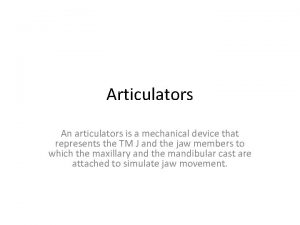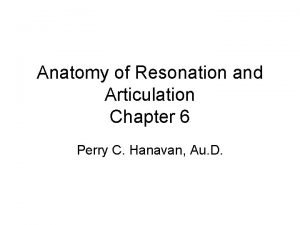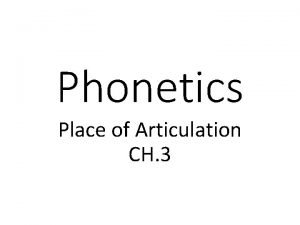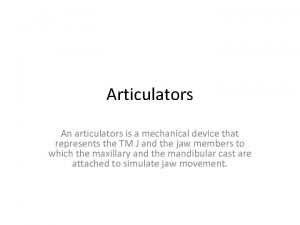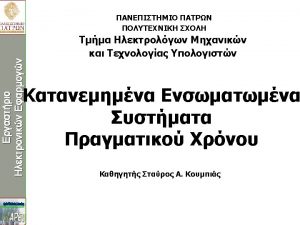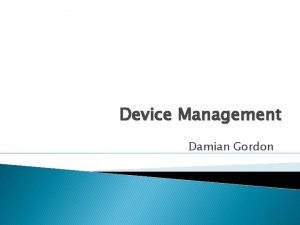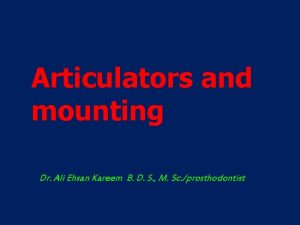Articulators An articulators is a mechanical device that








- Slides: 8

Articulators An articulators is a mechanical device that represents the TM J and the jaw members to which the maxillary and the mandibular cast are attached to simulate jaw movement.

PARTS OF AN ARTICULATORS • • • Upper member Lower member Incisal pin Vertical rod Incisal guide table Condylar elements Condylar guidance Retention rod pin Thumb nut Resting rod Siting rod

USES • Patients co-operation is not required in the presence of an articulator. • Saliva, tongue and cheek hindrances are eliminated. • Chair side and patient appointment time is reduced. • To diagnosis or analyze dental occlusal conditions in both natural and artificial dentition • To plan dental procedures that involve position , contours and relationship of both natural and artificial teeth as they relate to each other

Classification of articulators • Based on Theories of Occlusion: 1. Bonwill’s Theory of Occlusion 2. Conical Theory 3. Spherical Theory

• Based on the adjustability 1) Non adjustabable 2) Semi adjustable 3) Fully adjustable

• Non adjustable: - simple three point mean value non arcon articulators Mean articulators- condylar guidance 33 degree incisal guidance 15 degree inter condylar distance is 4 inches Non arcon –condylar element is the upper member and condylar guidance is in the lower member Arcon-condylar guidance is in the upper member and in the lower member Non-adjustable-condylar guidance and incisal guidance values are fixed and it cannot be adjustable / programmed

Based on prosthodontics workshop • Class 1 -simple holding instruments capable of accepting a single static registration • Class 2 -instrument that permit , horizontal as as vertical motion , but do not orient motion to the TMJ via face –bow transfer • Class 3 - instrument that simulates condylar pathways by using average or mechanical equivalence for all or part of the motion • Class 4 -instrument that will accept and dimensional dynamic registration

Requirments • Provide positive anterior vertical stop except a face –bow transfer • Open and close in a hinge movement • Should not be bulky and heavy • Adequate space between upper lower member • Moving parts should move freely without friction and the non moving parts should be rigid



